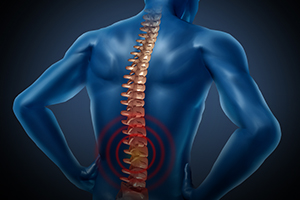Getting Back in Touch

For victims of spinal cord injury, loss of mobility is only half the story. In many cases, the impairment extends to their sense of touch as well as their sense of proprioception – a complex interaction of sensory neurons, stretch receptors and muscles that enables us to perform physical tasks like standing upright or walking without really thinking about them. Proprioception is controlled by special neurons in the spinal cord called sensory interneurons, which relay sensory information to the brain regarding the position of your body in three-dimensional space so you don’t tip over sideways or trip over your own feet. When these neurons are damaged, any movement requires intense concentration and conscious effort. These same types of neurons are also largely responsible for fast reflexes such as pulling your hand away from heat.
In a recently published study, researchers have discovered a way to potentially restore damaged sensory interneurons using stem cells. Although the technique has been used successfully for other types of nerve cells (such as motor neurons), differentiating stem cells into sensory interneurons required an understanding of the signaling compounds that enable the process. Using chicken and mouse models, they determined that a molecule known as BMP4 produced the most robust results.
They further uncovered the fact that by carefully controlling the time at which the differentiation molecule was added, they could create different types of sensory neurons – type 1, which sense spatial location, and type 3, which sense pressure and touch. The next step is to make the process more efficient; currently, only about 35 percent of the cells matured into sensory neurons.
For information: Samantha Butler, University of California, Los Angeles, Box 957243, TLSB 3028, 610 Charles E. Young Drive East, Los Angeles, CA 9009-7243; phone: 310-206-8416; email: butlersj@ucla.edu; Web site: https://butlerlab.neurobio.ucla.edu/